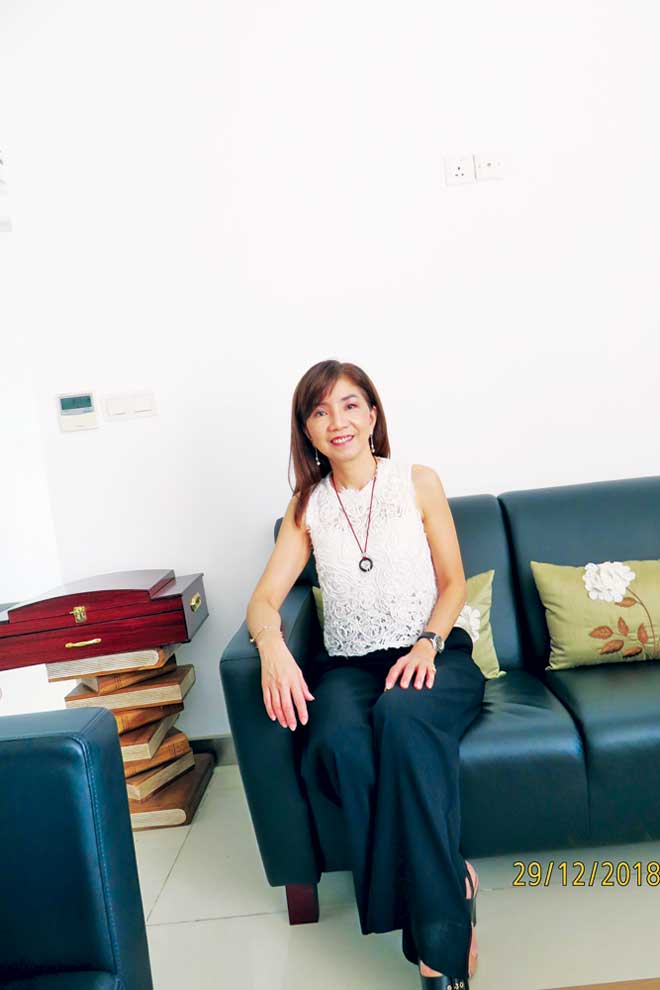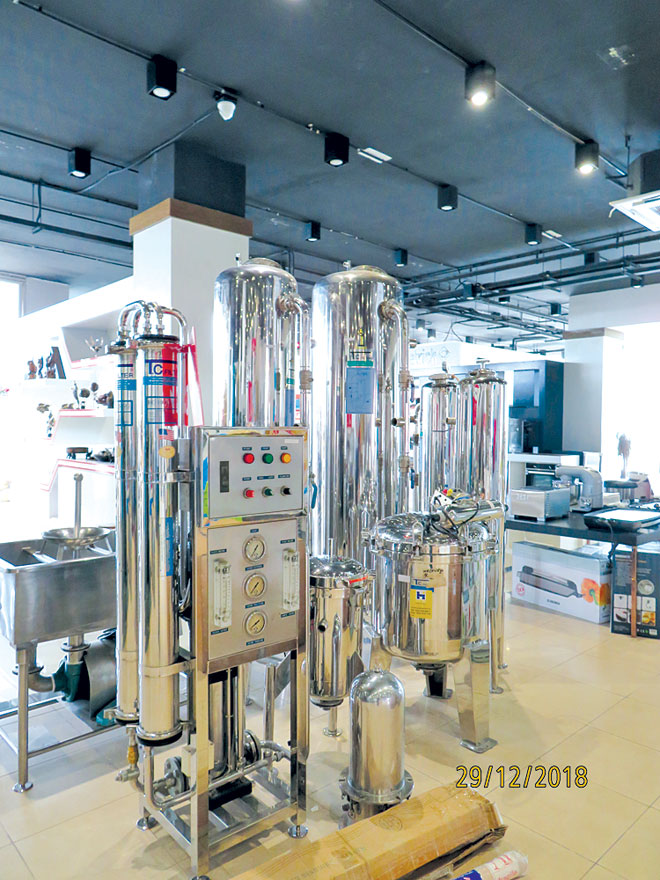
Heng Asia is the exclusive importer of Kohler products in to the Kingdom. POST STAFF
Heng Asia was established in 1991 as part of the company’s founder, Chea Kin’s vision for the future of home wares and construction in Cambodia. Supplying everything from sanitary and kitchen wares, through to water treatment systems and office furniture.
It is a one stop shop for all things interior design, construction, and the only place for exclusive, luxurious household amenities. It has been a cornerstone of Cambodian luxury design and architecture for over 20 years.
Boasting a 15-storey office building, built to specification for Heng Asia, the building houses Heng Asia’s large showroom, with five floors and 11, 000sqm of beautiful, clean, minimalist floor space, it is one of a kind in Cambodia.
When Kin started Heng Asia in 1991, the Cambodian business and construction landscape was very different.
When she returned to Cambodia in 1990, Kin was working as an accountant at a large hotel, “I could see an opportunity, at that time [there was] nothing in Cambodia . . . I felt that construction was something that would be growing fast. I saw construction as the long term option, I felt I wanted something that is long term”.
The motivation for Kin was always to create something with longevity that would aid in building Cambodian infrastructure, but also to aid Cambodian people in the creation of beautiful homes and buildings that could motivate a sense of pride in Cambodians, “I love construction, I love to see beautiful things”. It was through this method that Kin has used her company to engage and develop Khmer builders, architects and designers to help service Khmer construction infrastructure.

Chea Kin. POST STAFF
The offerings at Heng Asia have been honed to cater to the Cambodian market. “The house is very very important in Cambodia . . . everyone feels they need their own house, everyone wants a home to go to when they finish work ... the family feeling in Cambodia is very strong . . . that is the reason why house building in Cambodia is booming.” Armed with a deep understanding of her market, Kin and Heng Asia are perfectly positioned to serve the market with unique, exclusive and beautiful products.
One unique trait of modern Khmer homes says Kin, is many bathrooms. Bathrooms are becoming the must have for every individual living in the home.
“This is very surprising in Cambodia now, one house, four bedrooms, five bathrooms . . . you never see other countries with more bathrooms than bedrooms! Every bedroom needs one bathroom because Cambodian people feel very comfortable when they are in the bathroom...after working so hard you need to relax . . . you take time, you need a private space for yourself.”
The other big private growth area for Cambodia has been the kitchen, “The kitchen is very important to Cambodians.” Interestingly when compared to other countries like the US, Cambodians have different priorities, they will “spend a lot of money on these two rooms [bathroom and kitchen], not the sitting room, or the dining room, but these two rooms.”

Customers browse part of the 5th floor, open plan showroom. POST STAFF
The commercial sector has been choosing to use Heng Asia for their high quality supply needs for years. Heng Asia has worked on some of the biggest construction projects in Cambodia, like Rosewood, Sofitel, the Australian embassy, and many developments on Koh Pich to name just a few, “because we are here for twenty or thirty years, most of the construction companies, they know us.”
Brands that Heng Asia have exclusive distribution rights to have been very successful for high end luxury developments, “Kohler is an American brand, it is mostly exclusive for the five star hotels, mostly for the very high end”.
Another point of difference for Heng Asia is their dedication to providing ecologically sustainable materials, one such material is a concrete structural material that is mixed with sawdust to lessen the waste from sawmills, and to increase the strength of the concrete. In addition it is termite resistant, has a longer life, and resembles timber, catering to the Cambodian penchant for timber.
“Slowly, slowly, some foreigners are beginning to understand that wood can bend, it can warp . . . so we are trying to push that product into the market.”
Although these products do come with a heftier price tag, “talking about eco-friendly, of course the price is quite high and it is hard to encourage people to use it”. Given the many benefits of products such as this, “if they know about these benefits they will use it” because in the long term it will save them money.

The kitchen is a very important room in a Khmer home. Post staff
One surprising point for Heng Asia has been the willingness with which Cambodian people have accepted new technology. Far from being laggards, Cambodians have embraced technology with the zeal of early adopters.
“They love to have modern technology,” said Kin.
Cambodians are choosing to combine traditional aspects with some design points they have seen elsewhere, “they remain traditional, but they also bring in some new technology, they see something, when they travel somewhere. They say ‘I like this one’ and try to copy it in [to their homes]”.
“They love to learn, but they keep the traditional,” says Kin of the Khmer aesthetic.
Kin has worked hard to ensure that the company has a strong sense of ethics and practices Corporate Social Resposibility, this is evident in her approach to water quality, waste water treatment, and water conservation in the Kingdom, “one thing we are trying to push in the environment, I have been doing waste water management since 2000 . . . fresh water is very important”.
Kin points out that “the world is two thirds water but the water we can use is only a small amount, clean [potable] water is rare.”

Water filtration systems for private and commerical use. Post staff
Given the large amounts of fresh water that bless the kingdom, some citizens do not understand the real value of this precious resource. Heng Asia has spent the last two years educating citizens, “we are trying to teach them [about respecting water] also we work with the environmental department of the government, and we are seeing some results . . . we are trying to educate”.
So what then will the future bring for Heng Asia, are they looking forward, and if so, how?
Kin stressed that going forward, Heng Asia is not solely concerned with making a profit, “we are trying to see how to push the environment, how to lift the living standard, how to make life better for Cambodians”.
By maintaining current rates of sale in the private and commercial sectors, Heng Asia is presented with an opportunity to encourage social environmental responsibility and conservation in the Kingdom, our “aim is not sales targets, or selling a lot, we want the people to know about their country, culture and traditions”.
By continuing to create high quality, buildings and homes, and educating Cambodians about their natural resources, Kin hopes that Heng Asia can help to build national pride, already Kin notes, “People are proud to be Cambodian, they want to announce it, ‘I am Khmer’”.









